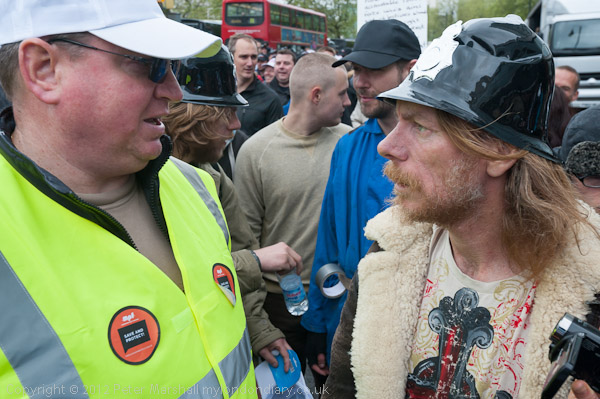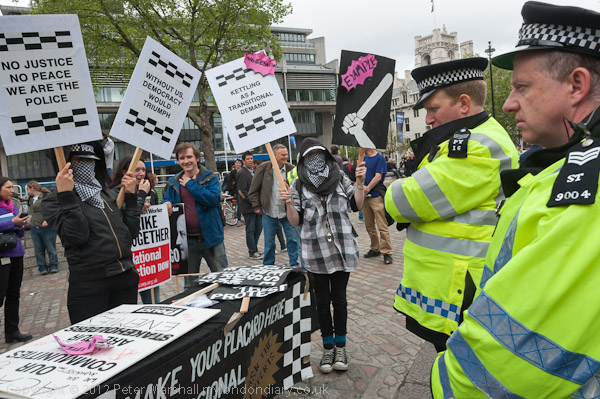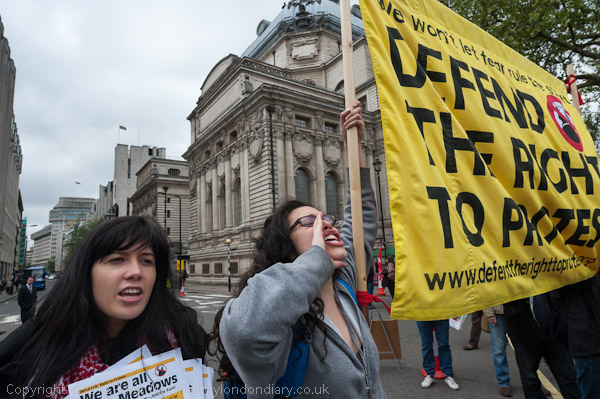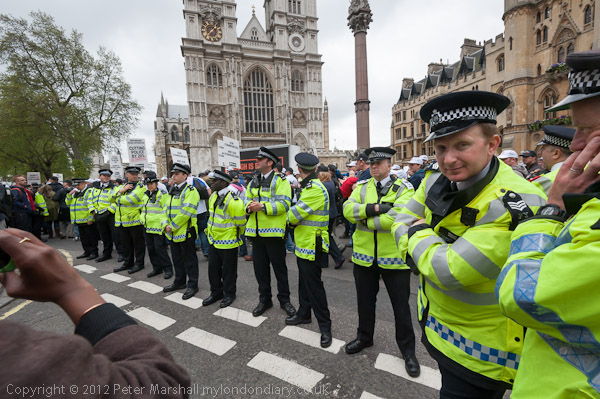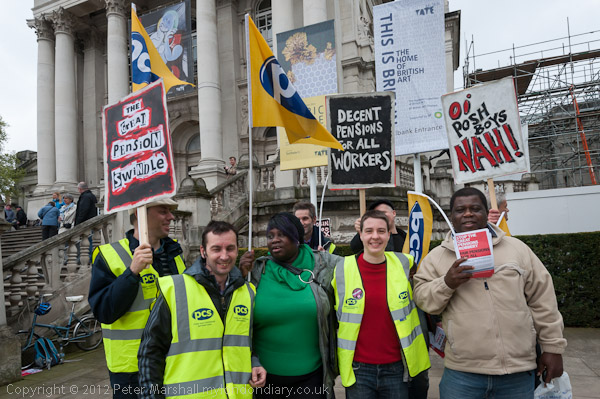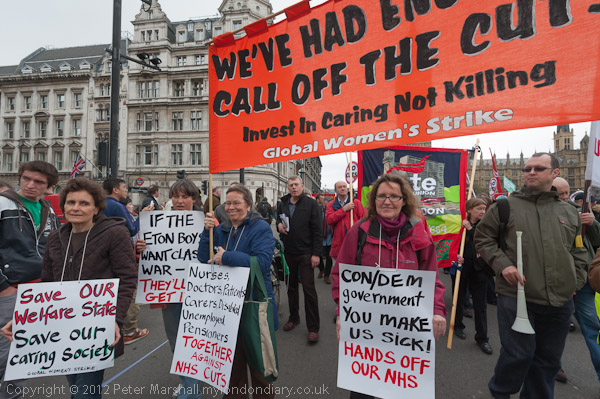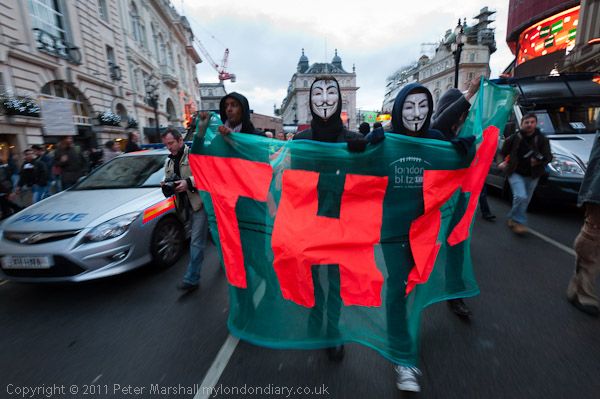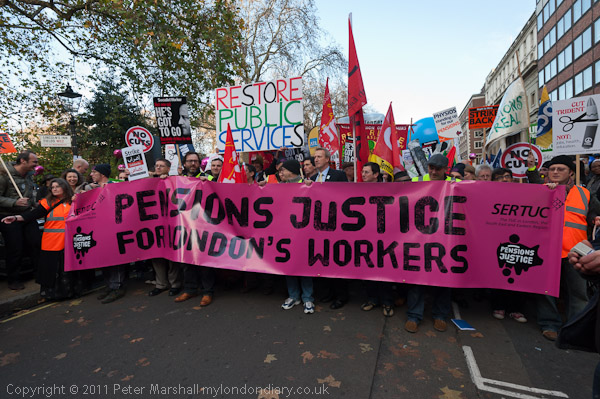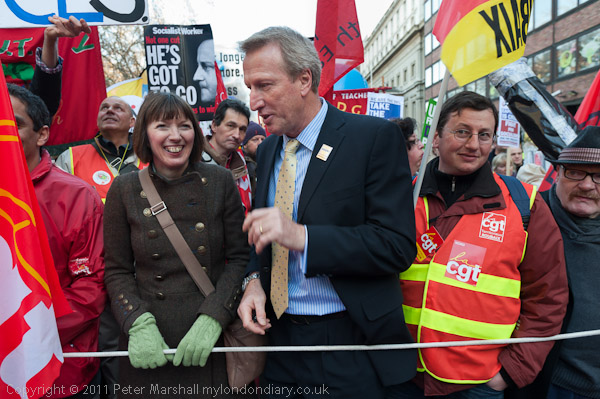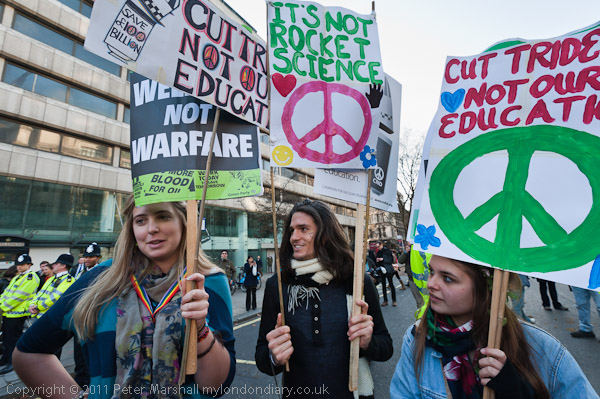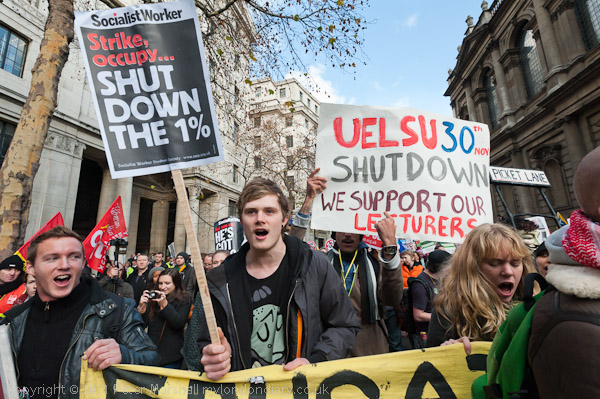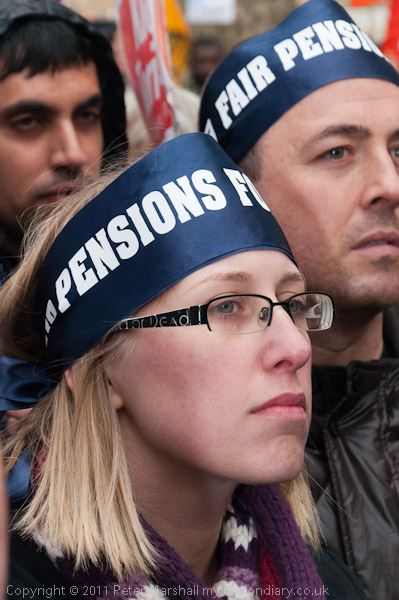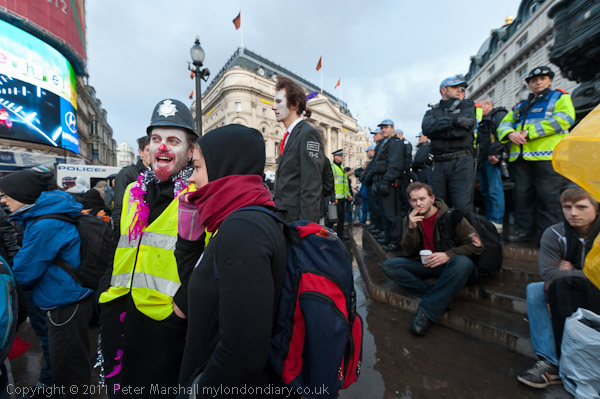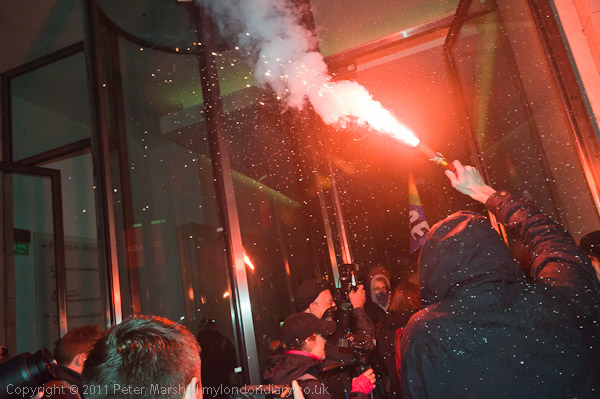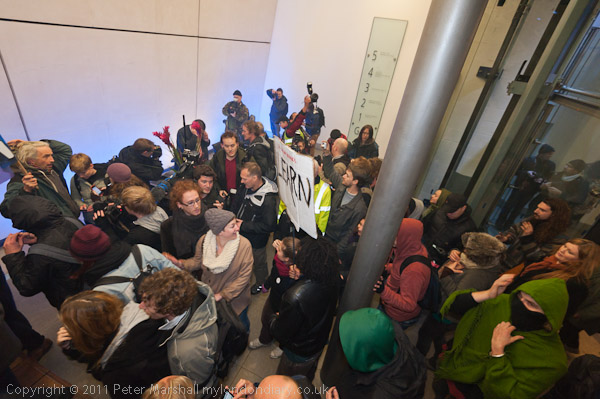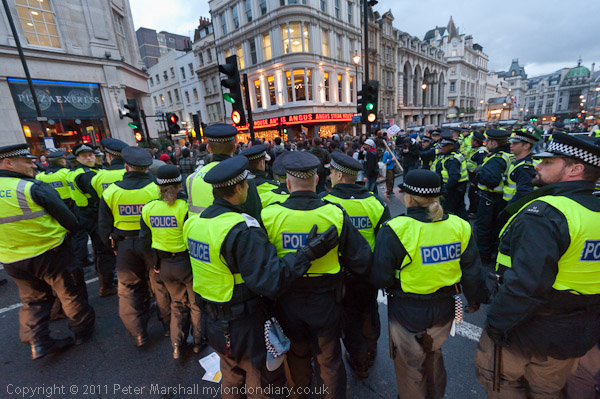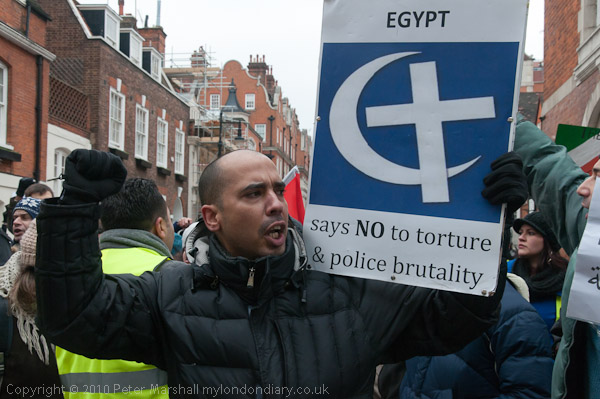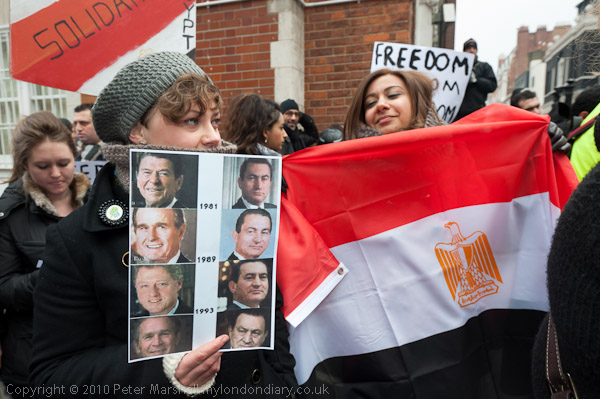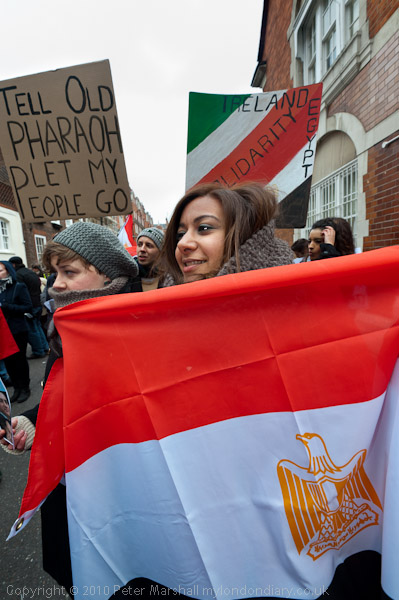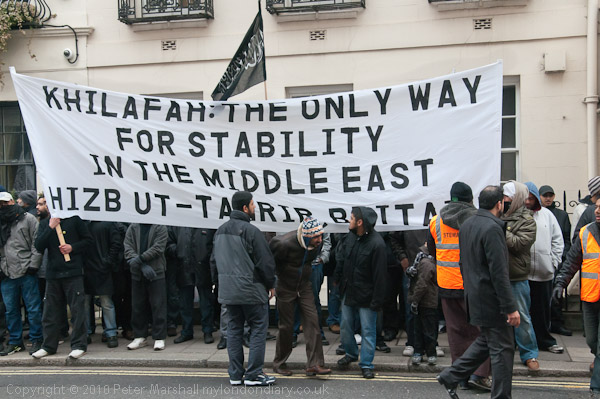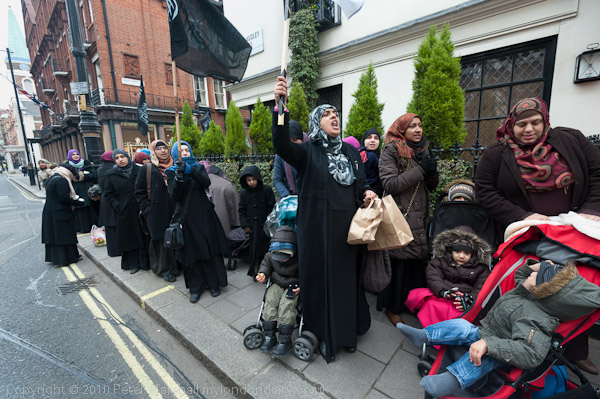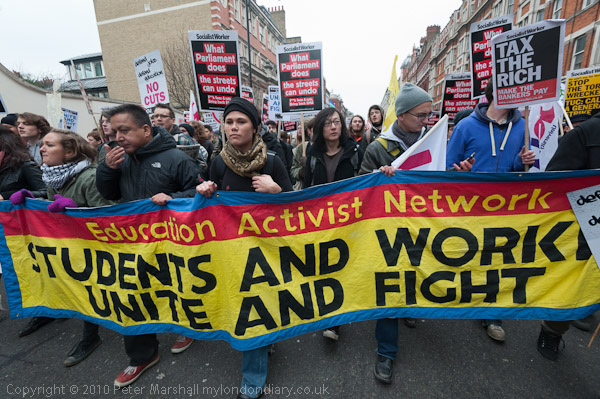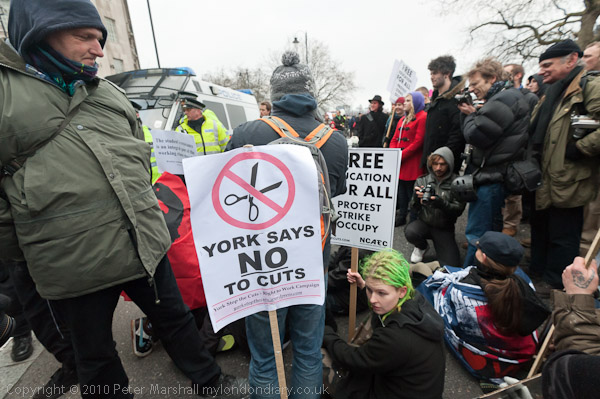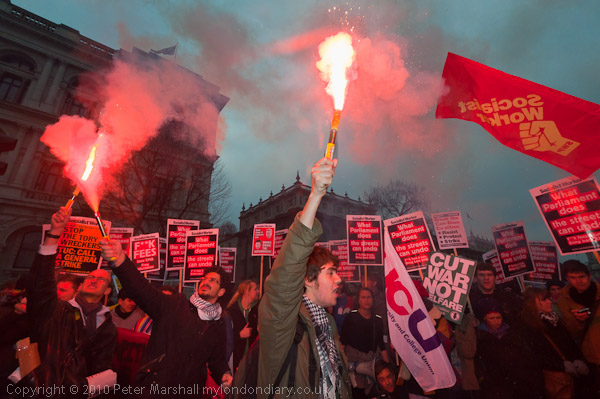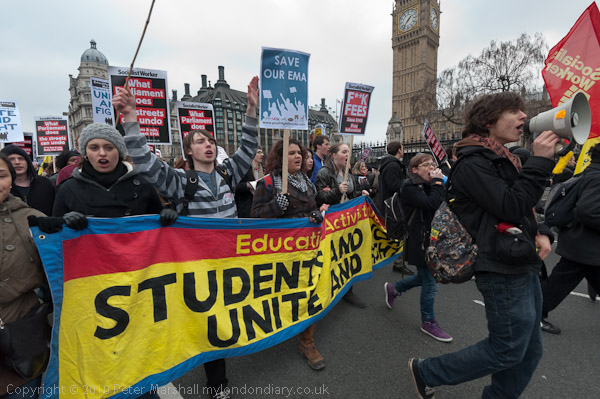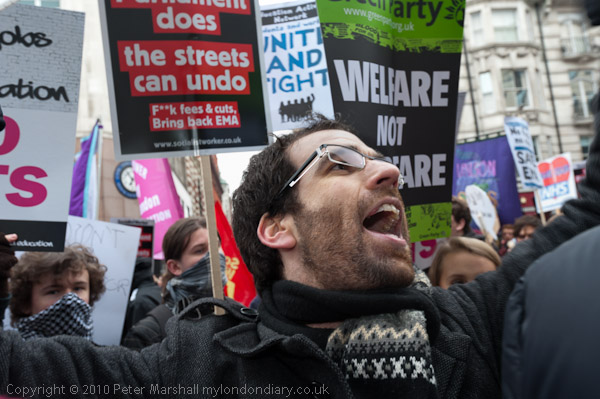Police, Public Sector & Peace Campaign – Thursday 10th May 2012 saw two rather different marches by workers taking place in London, with a large protest by police and a day of public sector strikes with trade unionists marching to a rally. I also visited the Parliament Square Peace Campaign.
Police March Against Cuts and Winsor
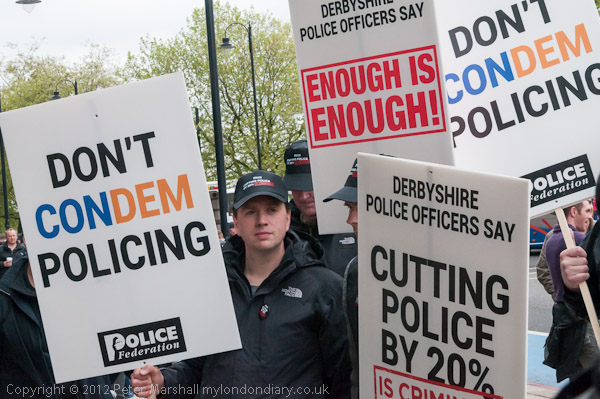
An estimated 20,000 police from all 43 forces in England & Wales marched through central London in protest at 20% cuts in police budget and proposed restructuring following the Winsor review. Other groups including Occupy and Right To Protest and others joined in call for justice in the policing of protest.
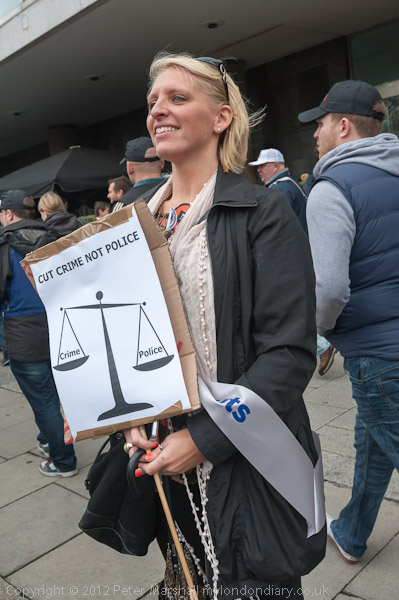
Police are not allowed to strike or belong to a proper trade union but can join the Police Federation, a staff association that can represent and support their interests. Although it cannot call for strike action it can organise demonstrations such as this one, attended by off-duty police and some family members.
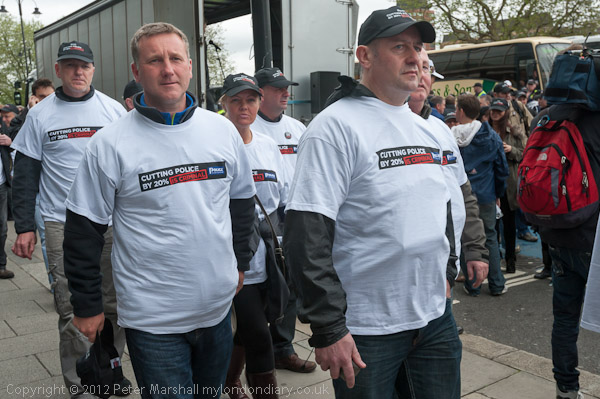
It was an impressively large march, but rather dull as it marched past the Home Office, the Houses of Parliament and Downing St, most wearing black caps. The Police Federation had provided 16,000 black caps to represent the number of warranted officers expected to be lost over the next four years due to the cut in the police budget of 20-30%.
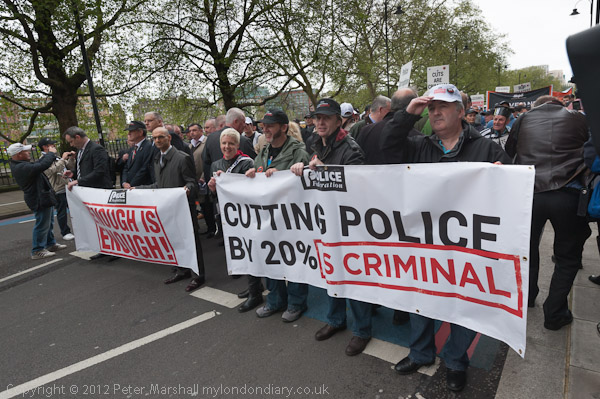
My pictures concentrate too much on the relatively few officers from some areas who had come with placards. Most simply marched and mainly in silence. A few carried carried small posters with the names of officers who had been unable to attend due to being at work – and there were some police who were policing the police protest, on rather better behaviour than at some other protests.

Some people also came to protest against the police, with the Space Hijackers setting up a ‘professional protest stall‘ at the side of the march offering advice on making placards and chanting. Most of the police marchers were amused by their chants such as ‘One Solution – Institution’ and some of the mock placards, although there were a few jeers.

Those Police policing the protest were less amused, and threatened the Space Hijackers with arrest unless they removed one of their placards with the well-known acronym ACAB. They also stood in front to try and hide them and other protesters including those with a ‘Defend the Right to Protest’ who were shouting slogans against police violence and over deaths in custody for which there is seldom if any justice.
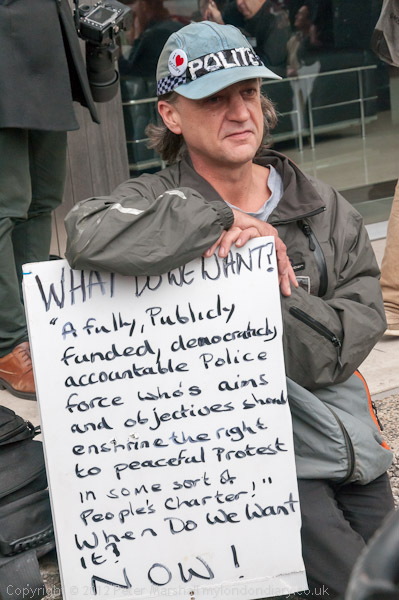
Some from Occupy London had come with plastic police helmets to join in the march, saying they were not against the police but called for a force that worked for the 99% rather than the 1%, or as one long-winded placard put it, “A fully, Publicly funded, democratically accountable Police force who’s aims and objectives enshrine the right to peaceful Protest in some sort of People’s Charter!”

Others taking part on the march included Ian Puddick who got intimidated, attacked and prosecuted by City of London Terrorism Police and Counter Terrorism Directorate in an operation costing millions carried out on behalf of a giant US security corporation after he discovered his wife had been having an affair with one of her bosses. He marched with a sign ‘Police Corruption‘ and unfortunately there is still a great deal of that as well as racism in forces around the country.
More on My London Diary at Police March Against Cuts and Winsor.
Public Sector Pensions Strike and March
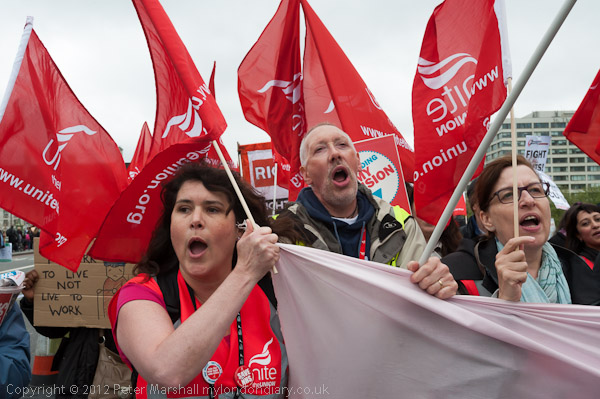
Unite, PCS and UCU were holding a one day strike against public sector cuts in pensions, jobs and services. Many had been up in the early hours picketing at their workplaces long before I arrived in London, but there were still pickets in place when I visited Tate Britain and walked past the House of Commons on my way to a rally outside St Thomas’ Hospital on the opposite bank of the Thames.
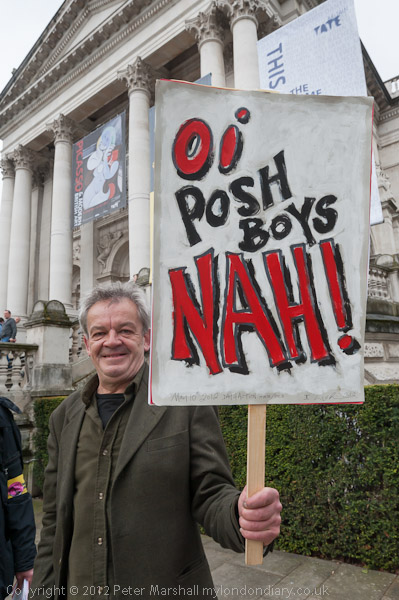
I arrived late for the rally there and people were just getting ready to march to a larger rally at Methodist Central Hall.

Workers are incensed by increases in their pension contributions and plans to increase them further. They are also worried by the increasing state retirement age which also applies to their pensions. Now in 2024 it is 66 and will increase to 67 between 2026 and 2028. A further rise to 68 is planned and the date for that is likely to be brought forward – as the rise to 67 was.

As they marched, people were chanting “Sixty-eight – is TOO Late“. Pensioners also feel they are being cheated by the government’s decision to index them to the CPI inflation rather than the higher RPI inflation figures, which will mean them receiving some 15-20% less. Over 94% of Unite’s NHS members voted to reject the government’s proposals and take strike action today along with members from the Ministry of Defence and government departments as well as others from the PCS and UCU.

I left the marchers as they went into the rally at Central Hall and returned to photograph the police march and visit the peace camp in Parliament Square.
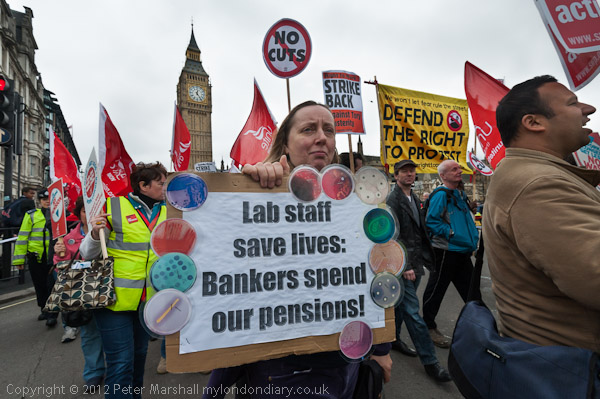
More pictures at Public Sector Pensions Strike and March.
4000 Days in Parliament Square
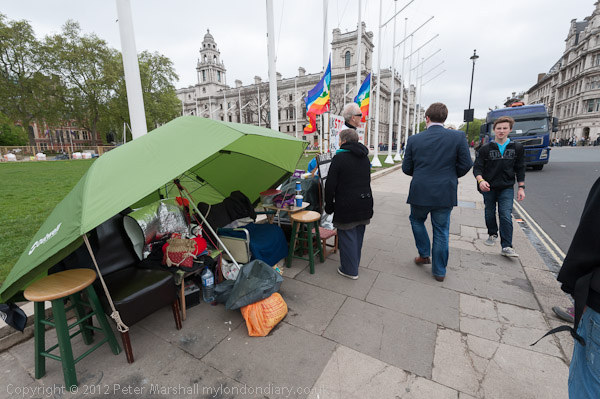
I went to talk with Barbara Tucker who was continuing the Parliament Square Peace Campaign begun by Brian Haw on the 2nd June 2001. The protest, continued by her and other supporters was about to reach a total of 4000 days of 24 hour protest in the square, with others in the group maintaining the presence on those various occasions when Brian or Barbara was arrested and held overnight.
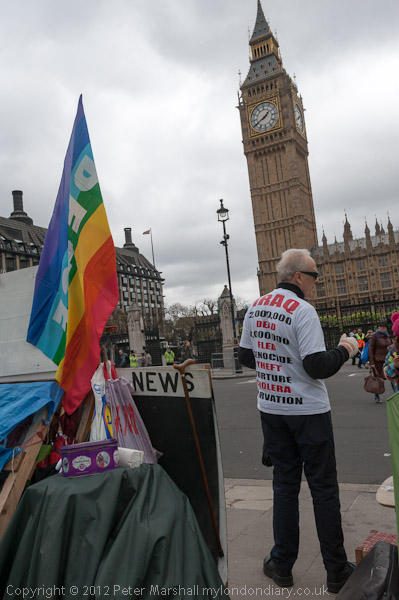
They had then continued for almost 11 years despite constant harassment years by police, who have been pressured by politicians – as well as passing two Acts of Parliament intended to end the protest.
As I wrote in 2012:
A few hours before I arrived, police had come and spent 90 minutes “searching” the few square meters of their display in the early morning, and three days later, at 2.30am on Sunday 13 May, police and Westminster Council came and took away the two blankets that Barbara Tucker, no longer allowed to have any “structure designed solely or mainly to sleep in” by law was using to survive in the open. This was apparently one of two visits over the weekend by police and council in which they illegally removed property from the site.
4000 Days in Parliament Square.
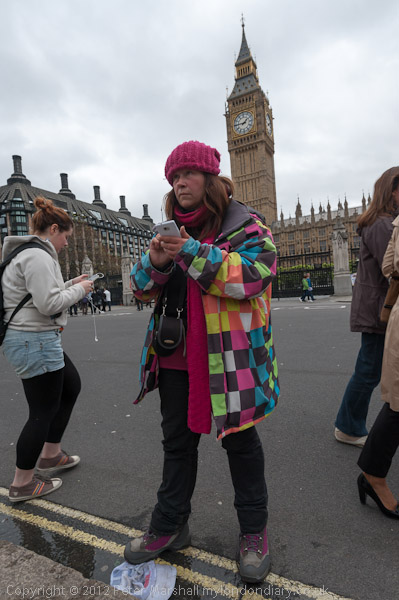
Despite an increase in harassment as a great attempt was made to clean up the capital for the Olympics, the peace protest continued in the square for another year, with Barbara Tucker starting a hunger strike in January 2013. Eventually she became too ill to continue and the protest came to an end in May 2013.
Flickr – Facebook – My London Diary – Hull Photos – Lea Valley – Paris
London’s Industrial Heritage – London Photos
All photographs on this page are copyright © Peter Marshall.
Contact me to buy prints or licence to reproduce.
